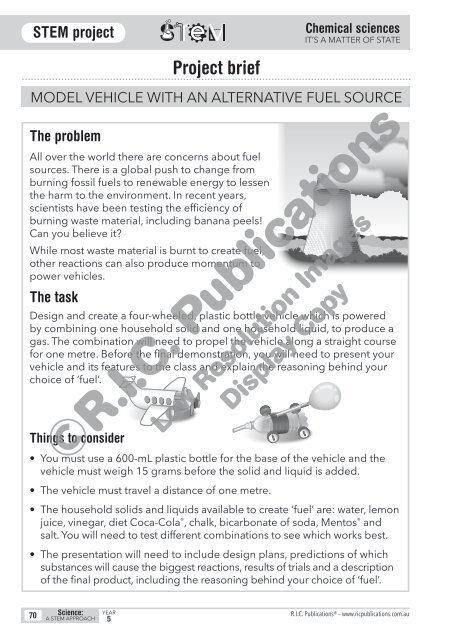20389_Science_with_STEM_Year_5_Chemical_Sciences_Its_a_matter_of_state
You also want an ePaper? Increase the reach of your titles
YUMPU automatically turns print PDFs into web optimized ePapers that Google loves.
<strong>STEM</strong> project<br />
<strong>Chemical</strong> sciences<br />
IT’S A MATTER OF STATE<br />
Project brief<br />
MODEL VEHICLE WITH AN ALTERNATIVE FUEL SOURCE<br />
The problem<br />
All over the world there are concerns about fuel<br />
sources. There is a global push to change from<br />
burning fossil fuels to renewable energy to lessen<br />
the harm to the environment. In recent years,<br />
scientists have been testing the efficiency <strong>of</strong><br />
burning waste material, including banana peels!<br />
Can you believe it?<br />
While most waste material is burnt to create fuel,<br />
other reactions can also produce momentum to<br />
power vehicles.<br />
The task<br />
Design and create a four-wheeled, plastic bottle vehicle which is powered<br />
by combining one household solid and one household liquid, to produce a<br />
gas. The combination will need to propel the vehicle along a straight course<br />
for one metre. Before the final demonstration, you will need to present your<br />
vehicle and its features to the class and explain the reasoning behind your<br />
choice <strong>of</strong> ‘fuel’.<br />
Things to consider<br />
©R.I.C. Publications<br />
Low Resolution Images<br />
Display Copy<br />
• You must use a 600-mL plastic bottle for the base <strong>of</strong> the vehicle and the<br />
vehicle must weigh 15 grams before the solid and liquid is added.<br />
• The vehicle must travel a distance <strong>of</strong> one metre.<br />
• The household solids and liquids available to create ‘fuel’ are: water, lemon<br />
juice, vinegar, diet Coca-Cola ® , chalk, bicarbonate <strong>of</strong> soda, Mentos ® and<br />
salt. You will need to test different combinations to see which works best.<br />
• The presentation will need to include design plans, predictions <strong>of</strong> which<br />
substances will cause the biggest reactions, results <strong>of</strong> trials and a description<br />
<strong>of</strong> the final product, including the reasoning behind your choice <strong>of</strong> ‘fuel’.<br />
70 <strong>Science</strong>:<br />
A <strong>STEM</strong> APPROACH<br />
YEAR<br />
5<br />
R.I.C. Publications® – www.ricpublications.com.au


















